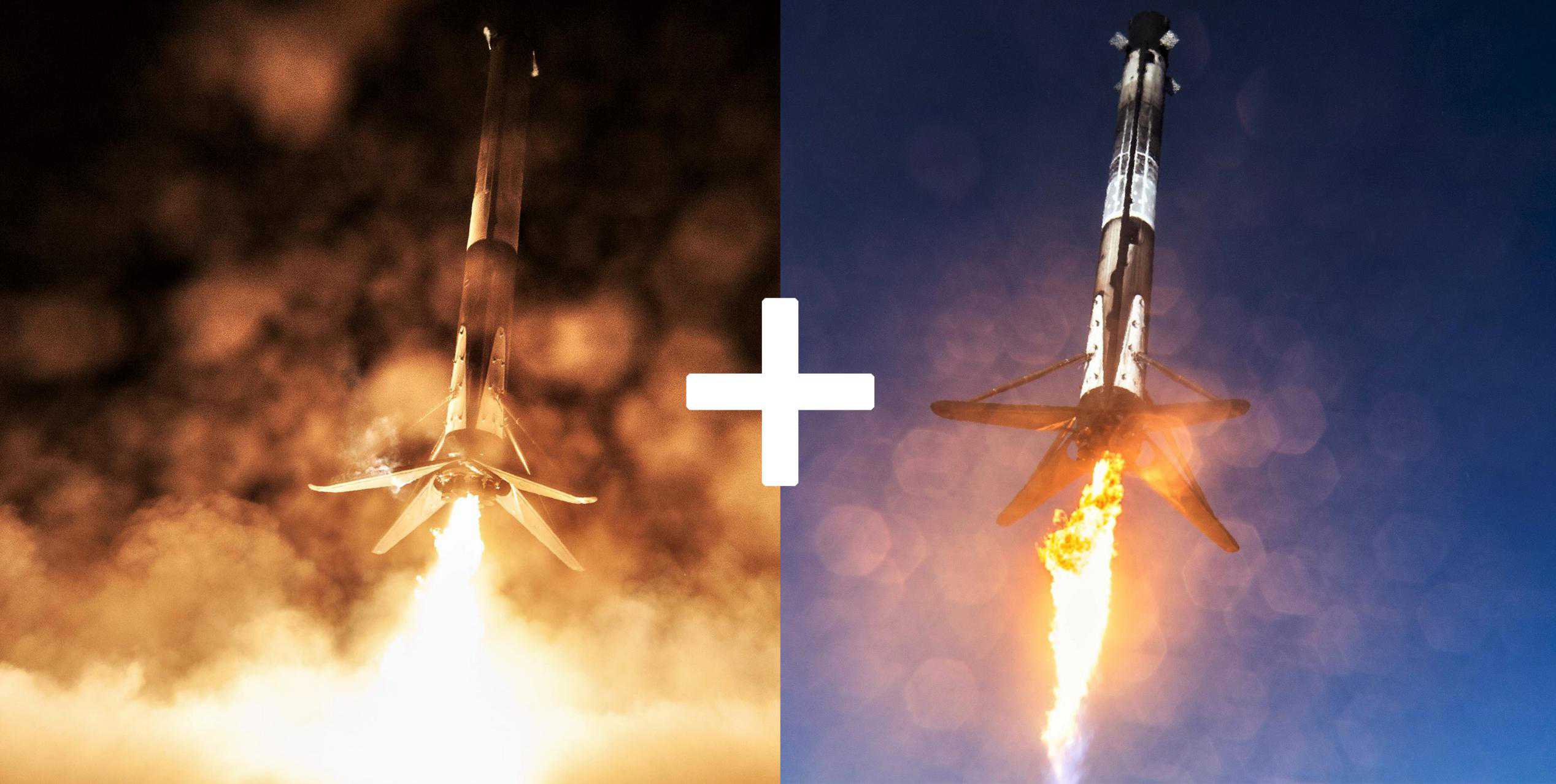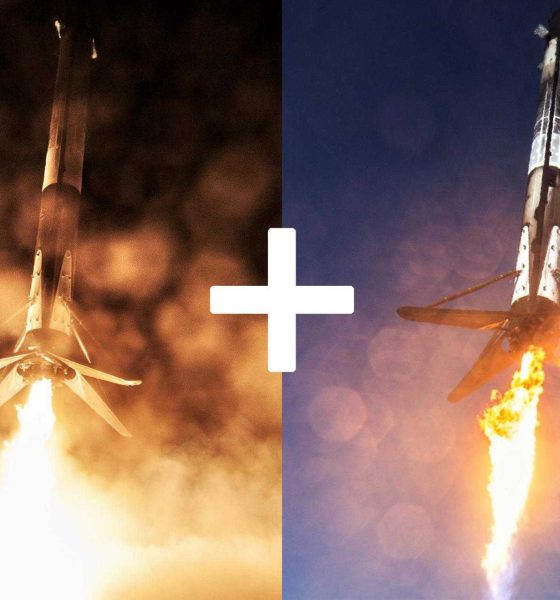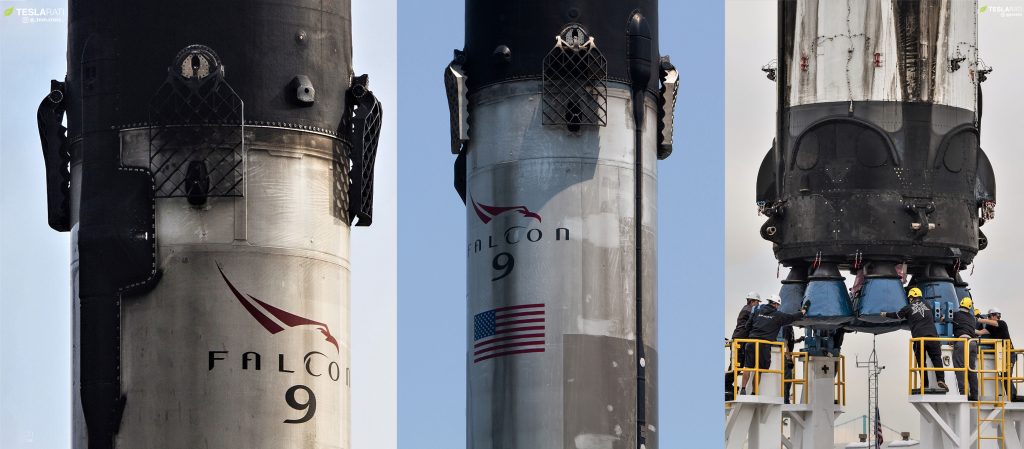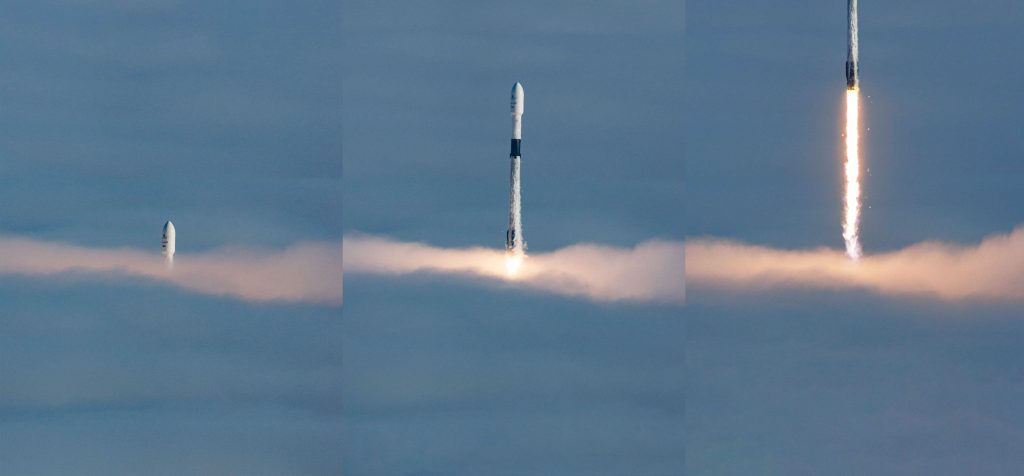

News
SpaceX set for back-to-back weekend launches: Crew Dragon abort test, 60 more Starlink satellites
Two SpaceX Falcon 9 rockets are currently on track to launch back-to-back missions just a handful of days from now, potentially supporting Crew Dragon’s second flight test ever and yet another Starlink satellite launch a little over two days from now.
Known as Crew Dragon’s In-Flight Abort (IFA) test, the first mission is scheduled to lift off from Kennedy Space Center Launch Complex 39A (KSC LC-39A) no earlier than (NET) 8 am EST (13:00 UTC), January 18th and will almost certainly produce some spectacular fireworks (even more so than usual). During the test, SpaceX’s newest flightworthy Crew Dragon spacecraft will attempt to escape from a supersonic Falcon 9 rocket, exceptionally challenging conditions that will almost certainly result in the immediate (intentional) destruction of Falcon 9’s upper stage and booster.
A few miles to the north, SpaceX is preparing an entirely different Falcon 9 rocket for the third launch of 60 upgraded Starlink v1.0 satellites in barely two months, scheduled to lift off NET 12:20 pm EST (17:20 UTC), January 20th from Cape Canaveral Air Force Station (CCAFS) Launch Complex 40 (LC-40). While the duo of launches will break no records for SpaceX, they will certainly set the tone the company is aiming to keep throughout the rest of 2020.
On January 11th, SpaceX successfully fired up Falcon 9 B1046 at Pad 39A, performing the booster’s fifth routine static fire test (if not more) in approximately two years. The first Block 5 booster built and flown by SpaceX, B1046 has performed three orbital-class launches since it debuted in May 2018 and even became the first Falcon 9 booster to launch three times in December 2018.
Since that milestone, B1046 spent several months at SpaceX’s Hawthorne, CA factory undergoing inspections and refurbishment. At some point, SpaceX assigned the thrice-flown booster to support Crew Dragon’s In-Flight Abort (IFA) test – effectively a death sentence – and shipped the booster to Florida, where it publicly appeared for the first time in months on October 3rd, 2019. Given that four more Falcon 9 boosters have now successfully performed three (or even four) orbital-class launches each, B1046’s now-imminent demise is certainly disappointing but remains extremely pragmatic.
Sure, B1046 could have theoretically flown several more orbital-class launches before it might have otherwise been quietly retired, but it is still the first Falcon 9 Block 5 booster qualified for flight. Although SpaceX and CEO Elon Musk were explicit that Block 5 would be the last major design iteration for the Falcon family of launch vehicles, that definitely doesn’t rule out tweaks – minor to major – that have likely been implemented since the rocket’s flight debut. In the 20 months since that debut, Falcon 9 and Heavy Block 5 boosters have performed more than two dozen launches and landings and checked off several reusability milestones.

In simple terms, those dozens of flights and reuses all translate to lots and lots (and lots) of high-fidelity data. That data – and often the hardware it’s connected to – can be used to extensively cross-check and improve the Falcon 9 and Heavy engineering models SpaceX created while designing, producing, and ground testing the Block 5 upgrade prior to its flight debut. It can also be used to upgrade to the rocket where needed, especially useful when it comes to reusability.
Although Falcon Block 5 boosters already appear to be exceptionally reliable and reusable, having checked off multiple third-flight and fourth-flight milestones in the last year, there is always room for improvement – especially if Musk is still serious about his long-held goal of launching the same Falcon 9 booster twice in ~24 hours. Along those lines, it’s safe to assume that at least some of the boosters that come off the assembly line after B1046 feature design tweaks meant to optimize for reliability and reusability, among other things.
For the most part, it seems that SpaceX is no longer aggressively pursuing ~24-hour booster turnaround, although they very likely intend to continue cutting the work hours required for (and thus the cost of) each reuse. B1046’s demise may shrink SpaceX’s reusable rocket fleet by one but the company will continue to debut the occasional new booster throughout 2020, ultimately ensuring that the fleet grows over time. Ultimately, if SpaceX only needs to spend a week or two inspecting and refurbishing each Block 5 booster and has a fleet of 10-20 or more, 24-hour turnaround may not even be necessary to achieve the desired results it was meant to represent.

Finally, SpaceX aims to launch its fourth batch of 60 Starlink satellites overall as few as ~52 hours after Falcon 9’s Crew Dragon In-Flight Abort mission and nextspaceflight.com reports that Falcon 9 B1051 will support the Starlink V1 L3 mission – the booster’s third orbital-class launch in ~10 months. Thankfully, B1051 – formerly tasked with supporting Crew Dragon’s Demo-1 orbital launch debut in March 2019 and Canada’s Radarsat Constellation Mission (RCM) in June 2019 – will almost certainly be attempting its second drone ship landing and third recovery overall.
Check out Teslarati’s Marketplace! We offer Tesla accessories, including for the Tesla Cybertruck and Tesla Model 3.

News
Tesla Full Self-Driving gets sparkling review from South Korean politician
“Having already ridden in an unmanned robotaxi, the novelty wasn’t as strong for me, but it drives just as well as most people do. It already feels like a completed technology, which gives me a lot to think about.”

Tesla Full Self-Driving got its first sparkling review from South Korean politician Lee So-young, a member of the country’s National Assembly, earlier this week.
Lee is a member of the Strategy and Finance Committee in South Korea and is a proponent of sustainable technologies and their applications in both residential and commercial settings. For the first time, Lee was able to utilize Tesla’s Full Self-Driving technology as it launched in the country in late November.
Her thoughts on the suite were complimentary to the suite, stating that “it drives just as well as most people do,” and that “it already feels like a completed technology.”
드디어 오늘, 서울에서 테슬라 FSD 체험 했습니다.
JiDal Papa님의 모델S 협찬에 힘입어^^ 파파님 정말 감사합니다.
국회 -> 망원시장 -> 홍익대 -> 국회 복귀 코스였고요.
이미 무인 로보택시를 타봐서 그런지 신기함은
덜했지만, 웬만한 사람만큼 운전을 잘하네요.이미 완성된 기술이라고… pic.twitter.com/8pAidHBpRG
— 이소영 국회의원 (Soyoung Lee) (@im_soyounglee) December 17, 2025
Her translated post says:
“Finally, today I got to experience Tesla FSD in Seoul. Thanks to the Model S sponsored by JiDal Papa^^, I’m truly grateful to Papa. The route was from the National Assembly -> Mangwon Market -> Hongik University -> back to the National Assembly. Having already ridden in an unmanned robotaxi, the novelty wasn’t as strong for me, but it drives just as well as most people do. It already feels like a completed technology, which gives me a lot to think about. Once it actually spreads into widespread use, I feel like our daily lives are going to change a lot. Even I, with my license gathering dust in a drawer, don’t see much reason to learn to drive a manual anymore.”
Tesla Full Self-Driving officially landed in South Korea in late November, with the initial launch being one of Tesla’s most recent, v14.1.4.
It marked the seventh country in which Tesla was able to enable the driver assistance suite, following the United States, Puerto Rico, Canada, China, Mexico, Australia, and New Zealand.
It is important to see politicians and figures in power try new technologies, especially ones that are widely popular in other regions of the world and could potentially revolutionize how people travel globally.
News
Tesla dispels reports of ‘sales suspension’ in California
“This was a “consumer protection” order about the use of the term “Autopilot” in a case where not one single customer came forward to say there’s a problem.
Sales in California will continue uninterrupted.”

Tesla has dispelled reports that it is facing a thirty-day sales suspension in California after the state’s Department of Motor Vehicles (DMV) issued a penalty to the company after a judge ruled it “misled consumers about its driver-assistance technology.”
On Tuesday, Bloomberg reported that the California DMV was planning to adopt the penalty but decided to put it on ice for ninety days, giving Tesla an opportunity to “come into compliance.”
Tesla enters interesting situation with Full Self-Driving in California
Tesla responded to the report on Tuesday evening, after it came out, stating that this was a “consumer protection” order that was brought up over its use of the term “Autopilot.”
The company said “not one single customer came forward to say there’s a problem,” yet a judge and the DMV determined it was, so they want to apply the penalty if Tesla doesn’t oblige.
However, Tesla said that its sales operations in California “will continue uninterrupted.”
It confirmed this in an X post on Tuesday night:
This was a “consumer protection” order about the use of the term “Autopilot” in a case where not one single customer came forward to say there’s a problem.
Sales in California will continue uninterrupted.
— Tesla North America (@tesla_na) December 17, 2025
The report and the decision by the DMV and Judge involved sparked outrage from the Tesla community, who stated that it should do its best to get out of California.
One X post said California “didn’t deserve” what Tesla had done for it in terms of employment, engineering, and innovation.
Tesla has used Autopilot and Full Self-Driving for years, but it did add the term “(Supervised)” to the end of the FSD suite earlier this year, potentially aiming to protect itself from instances like this one.
This is the first primary dispute over the terminology of Full Self-Driving, but it has undergone some scrutiny at the federal level, as some government officials have claimed the suite has “deceptive” naming. Previous Transportation Secretary Pete Buttigieg was vocally critical of the use of the name “Full Self-Driving,” as well as “Autopilot.”
News
New EV tax credit rule could impact many EV buyers
We confirmed with a Tesla Sales Advisor that any current orders that have the $7,500 tax credit applied to them must be completed by December 31, meaning delivery must take place by that date. However, it is unclear at this point whether someone could still claim the credit when filing their tax returns for 2025 as long as the order reflects an order date before September 30.

Tesla owners could be impacted by a new EV tax credit rule, which seems to be a new hoop to jump through for those who benefited from the “extension,” which allowed orderers to take delivery after the loss of the $7,500 discount.
After the Trump Administration initiated the phase-out of the $7,500 EV tax credit, many were happy to see the rules had been changed slightly, as deliveries could occur after the September 30 cutoff as long as orders were placed before the end of that month.
However, there appears to be a new threshold that EV buyers will have to go through, and it will impact their ability to get the credit, at least at the Point of Sale, for now.
Delivery must be completed by the end of the year, and buyers must take possession of the car by December 31, 2025, or they will lose the tax credit. The U.S. government will be closing the tax credit portal, which allows people to claim the credit at the Point of Sale.
🚨UPDATE: $7,500 Tax Credit Portal “Closes By End of Year”.
This is bad news for pending Tesla buyers (MYP) looking to lock in the $7,500 Tax Credit.
“it looks like the portal closes by end of the year so there be no way for us to guarantee the funds however, we will try our… pic.twitter.com/LnWiaXL30k
— DennisCW | wen my L (@DennisCW_) December 15, 2025
We confirmed with a Tesla Sales Advisor that any current orders that have the $7,500 tax credit applied to them must be completed by December 31, meaning delivery must take place by that date.
However, it is unclear at this point whether someone could still claim the credit when filing their tax returns for 2025 as long as the order reflects an order date before September 30.
If not, the order can still go through, but the buyer will not be able to claim the tax credit, meaning they will pay full price for the vehicle.
This puts some buyers in a strange limbo, especially if they placed an order for the Model Y Performance. Some deliveries have already taken place, and some are scheduled before the end of the month, but many others are not expecting deliveries until January.








